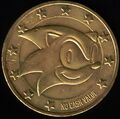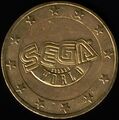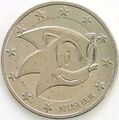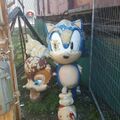Sega World Sydney
From Sega Retro
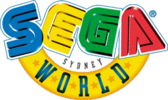
|

|
| Sega World Sydney |
|---|
| Location: Darling Harbour, Sydney, Australia |
| Opened: 1997-03-18 |
| Closed: 2000-11 |
This short article is in need of work. You can help Sega Retro by adding to it.
Sega World Sydney was an indoor Sega World amusement park located at Darling Harbour, Sydney, Australia. Hailed as "Australia's Interactive Disneyland", the high-tech park was built as the flagship tenant of the Darling Walk complex in Darling Harbour.
The overall design and feel of the park was very similar to Sega Japan's Joypolis centers, featuring 7 rides and simulators, a food court, and over 200 arcade and redemption games. The venue featured a time-travel theme[1], with "Past", "Present", and "Future" sections of the park connected by colorful, Disney-inspired corridors called "Time Tunnels".
Sega World Sydney is known for it's heavy promotion of the Sonic the Hedgehog franchise, with a unique emphasis on the characters and continuities from the western Sonic cartoon series that were airing at the time. Tails and Dr. Robotnik took on their Adventures of Sonic the Hedgehog appearances and personalities, Princess Sally Acorn was taken from the Sonic SatAM continuity, and Sonic himself was portrayed as a blend of both of his cartoon incarnations. These four characters served as the park's mascots, starring in stage shows, puppet theaters, life-sized statues, and hundreds of gift shop souvenirs. While the primary emphasis was on the Sonic franchise, more obscure Sega characters such as Bug! were also heavily promoted, both on the park's official website and as collectable merchandise in the Sega World gift shop.
Contents
History
Jacfun Pty Ltd, in collaboration with Sega and the Darling Harbour Authority, invested $80 million AUD to build Sega World. Land for the park was acquired by Jacfun in 1994, with the park's grand opening in 1997. The park was housed in a massive, custom-built entertainment complex, easily recognizable by the giant blue cone that sat atop the building's roof. The park itself took up 10,000 sq. meters of space, making it the largest Sega amusement park to date. The remainder of the complex was sublet to a mix of retail and entertainment tenants.
In 1999, the park was suffering from below-expected attendance and constant financial losses, causing Sega to pull out from the partnership and sell the park to Jacfun for $36 million AUD. Hopes that the influx of tourists travelling to Sydney for the 2000 Summer Olympics would help the park meet its 800,000-visitor breakeven point went unrealized, and the park permanently closed its doors in November 2000.
Attractions
Promotional material
AU TV advert
Merchandise
Photo gallery
External links
- Sega World Sydney homepage (archived)

